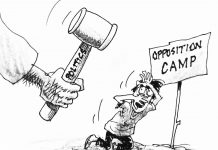The rise of sophisticated technology has brought unprecedented tools for creation and communication, but it has also unleashed a surge of digital fakery that threatens truth itself. With a click and a clever algorithm, a smiling face can cry, a voice can be forged, and a person’s image can be seamlessly superimposed onto another’s body. In this blurred reality, the line between genuine and counterfeit grows dangerously thin, undermining trust and leaving society in perpetual doubt.
Consider the power of modern software that can manipulate photos and videos to astonishing degrees of believability. A single image can now be animated to perform actions never captured in real life. Videos of individuals saying or doing things they never actually did can circulate widely, and even seasoned professionals struggle to discern authenticity. The implications are staggering, especially in sensitive areas such as journalism, where altered visuals can erode public trust in media and perpetuate misinformation.
The problem extends beyond visuals to audio, where artificial intelligence can now mimic voices with chilling accuracy. Imagine a world where a recorded confession can be fabricated or a speech altered to distort someone’s intent. The judicial system, which often relies on evidence perceived as objective and irrefutable, faces a new challenge: How does one differentiate between authentic recordings and deceptive fabrications? In such a landscape, the presumption of innocence becomes harder to defend when the evidence itself might be a lie.
This culture of technological deception also preys on human relationships and reputations. Deepfake scandals, for example, have ruined lives by planting people into compromising situations they were never part of. Such technology is not only used to entertain or mislead but has become a weapon for exploitation and blackmail. The personal cost of these fakes is immeasurable, as victims grapple with public shame and the inability to prove their innocence in a world conditioned to believe what it sees.
Society must prioritize education about digital literacy, empowering individuals to question and verify what they consume online. Stricter regulations on the use and dissemination of manipulative technologies are also necessary to ensure that creators and distributors are held accountable. The responsibility falls not just on governments but on technology companies to develop tools that detect and flag fakes before they wreak havoc. If the truth is to survive in this age of deception, decisive action cannot wait.




